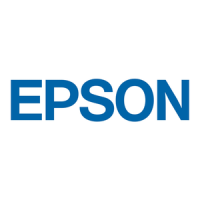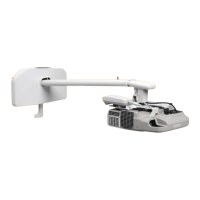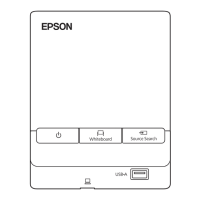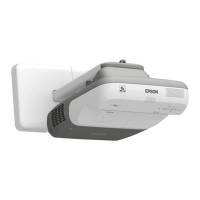40
Note: A USB connection may cause a delay for content requiring high bandwidth, such as movies. An
HDMI connection is recommended for projecting movies, video games, and other home entertainment
content.
1. Turn on your computer.
2. Connect the cable to your projector's USB-B1 port.
Note: If you use a USB hub, the connection may not operate properly. Connect the USB cable
directly to the projector. When using the control pad (BrightLink 1485Fi+), the projector cannot
detect the image signal input from the projector's USB-B port. Connect the USB cable to the control
pad.
3. Connect the other end to any available USB port on your computer.
4. To use USB Display, do one of the following:
• Windows 10/Windows 8.x: Click EPSON_PJ_UD in the upper right-corner, then select Run
EMP_UDSE.exe in the dialog box that appears to install the Epson USB Display software.
• Windows 7/Windows Vista: Select Run EMP_UDSE.exe in the dialog box that appears to install
the Epson USB Display software.
• Mac: The USB Display setup folder appears on your screen. Select USB Display Installer and
follow the on-screen instructions to install the Epson USB Display software.
Follow any on-screen instructions. You need to install this software only the first time you connect
the projector to the computer.
The projector displays the image from your computer's desktop and outputs sound, if your presentation
contains audio.
Parent topic: Connecting to Computer Sources
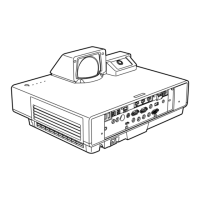
